Pahlavi dynasty
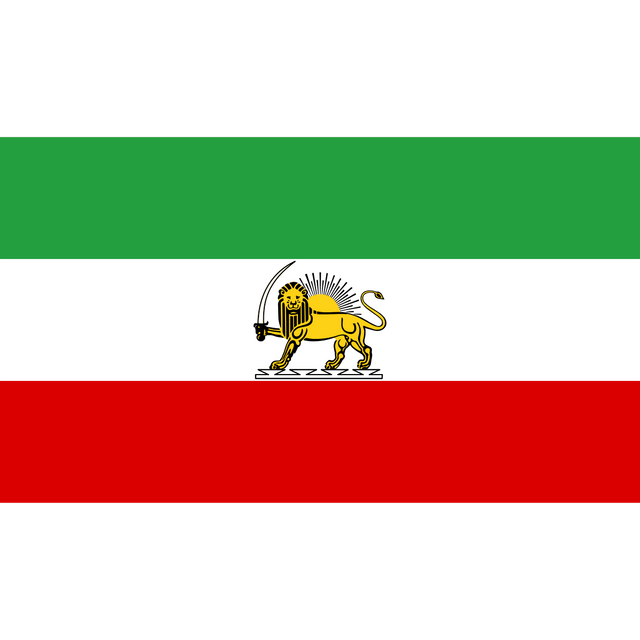
Pahlavi dynasty

Imperial State of Irana دولت شاهنشاهی ایران Kešvare Šâhanšâhiye Irân | |||||||||
|---|---|---|---|---|---|---|---|---|---|
| 1925–1979 | |||||||||
Royal anthem:سرود شاهنشاهی ایران Sorude Šahanšâhiye Iran (English:"Imperial Anthem of Iran") | |||||||||
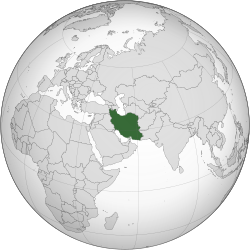 Location of Iran on the globe (current geopolitical boundaries, not at the time of Pahlavi dynasty). | |||||||||
| Capital and largest city | Tehran | ||||||||
| Official languages | Persian | ||||||||
| Religion | Shia Islam | ||||||||
| Demonym(s) | Persian (until 1935) Iranian (from 1935) | ||||||||
| Government |
| ||||||||
| Shah | |||||||||
• 1925–41 | Rezâ Pahlavi | ||||||||
• 1941–79 | Mohammad Rezâ Pahlavi | ||||||||
| Prime minister | |||||||||
• 1925–26 (first) | Mohammad-Ali Foruqi | ||||||||
• 1979 (last) | Šâpur Baxtiyâr | ||||||||
| Legislature | Deliberative assembly | ||||||||
• Upper house | Senate | ||||||||
• Lower house | National Consultative Assembly | ||||||||
| Historical era | 20th century | ||||||||
• Constituent Assembly voted formation of Pahlavi dynasty | 15 December 1925 | ||||||||
• Anglo-Soviet invasion of Iran | 25 August – 17 September 1941 | ||||||||
• Admitted to the United Nations | 24 October 1945 | ||||||||
• Coup d'etat | 19 August 1953 | ||||||||
• White Revolution | 26 January 1963 | ||||||||
| 11 February 1979 | |||||||||
• Islamic Republic established | 31 March 1979 | ||||||||
| Area | |||||||||
| 1979 | 1,648,195 km2(636,372 sq mi) | ||||||||
| Population | |||||||||
• 1955 | 19,293,999 | ||||||||
• 1965 | 24,955,115 | ||||||||
• 1979 | 37,252,629 | ||||||||
| Currency | Rial | ||||||||
| ISO 3166 code | IR | ||||||||
| |||||||||
| Today part of | Bahrain Iran | ||||||||
| |||||||||
| Pahlavi | |||||||||
 | |||||||||
| Founded | 15 December 1925 | ||||||||
| Founder | Reza Shah | ||||||||
| Current head | Reza Pahlavi | ||||||||
| Final ruler | Mohammad Reza Pahlavi | ||||||||
| Titles |
| ||||||||
| Deposition | 11 February 1979 | ||||||||
The Pahlavi dynasty (Persian: دودمان پهلوی) was the last ruling house of the Imperial State of Iran from 1925 until 1979, when the Persian monarchy was overthrown and abolished as a result of the Iranian Revolution. The dynasty was founded by Reza Shah Pahlavi in 1925, a former brigadier-general of the Persian Cossack Brigade, whose reign lasted until 1941 when he was forced to abdicate by the Allies after the Anglo-Soviet invasion of Iran. He was succeeded by his son, Mohammad Reza Pahlavi, the last Shah of Iran.
The Pahlavis came to power after Ahmad Shah Qajar, the last Qajar ruler of Iran, proved unable to stop British and Soviet encroachment on Iranian sovereignty, had his position extremely weakened by a military coup, and was removed from power by the parliament while in France. The Iranian parliament, known as the Majlis, convening as a Constituent Assembly on 12 December 1925, deposed the young Ahmad Shah Qajar, and declared Reza Khan the new King (Shah) of Imperial State of Persia. In 1935, Reza Shah asked foreign delegates to use the endonym Iran in formal correspondence and the official name the Imperial State of Iran was adopted.
Following the coup d'état in 1953 supported by United Kingdom and the United States, Mohammad Reza Pahlavi's rule became more autocratic and was aligned with the Western Bloc during the Cold War . Faced with growing public discontent and popular rebellion throughout 1978 and after declaring surrender and officially resigning , the second Pahlavi went into exile with his family in January 1979, sparking a series of events that quickly led to the end of the state and the beginning of the Islamic Republic of Iran on 11 February 1979.[1]
Imperial State of Irana دولت شاهنشاهی ایران Kešvare Šâhanšâhiye Irân | |||||||||
|---|---|---|---|---|---|---|---|---|---|
| 1925–1979 | |||||||||
Royal anthem:سرود شاهنشاهی ایران Sorude Šahanšâhiye Iran (English:"Imperial Anthem of Iran") | |||||||||
 Location of Iran on the globe (current geopolitical boundaries, not at the time of Pahlavi dynasty). | |||||||||
| Capital and largest city | Tehran | ||||||||
| Official languages | Persian | ||||||||
| Religion | Shia Islam | ||||||||
| Demonym(s) | Persian (until 1935) Iranian (from 1935) | ||||||||
| Government |
| ||||||||
| Shah | |||||||||
• 1925–41 | Rezâ Pahlavi | ||||||||
• 1941–79 | Mohammad Rezâ Pahlavi | ||||||||
| Prime minister | |||||||||
• 1925–26 (first) | Mohammad-Ali Foruqi | ||||||||
• 1979 (last) | Šâpur Baxtiyâr | ||||||||
| Legislature | Deliberative assembly | ||||||||
• Upper house | Senate | ||||||||
• Lower house | National Consultative Assembly | ||||||||
| Historical era | 20th century | ||||||||
• Constituent Assembly voted formation of Pahlavi dynasty | 15 December 1925 | ||||||||
• Anglo-Soviet invasion of Iran | 25 August – 17 September 1941 | ||||||||
• Admitted to the United Nations | 24 October 1945 | ||||||||
• Coup d'etat | 19 August 1953 | ||||||||
• White Revolution | 26 January 1963 | ||||||||
| 11 February 1979 | |||||||||
• Islamic Republic established | 31 March 1979 | ||||||||
| Area | |||||||||
| 1979 | 1,648,195 km2(636,372 sq mi) | ||||||||
| Population | |||||||||
• 1955 | 19,293,999 | ||||||||
• 1965 | 24,955,115 | ||||||||
• 1979 | 37,252,629 | ||||||||
| Currency | Rial | ||||||||
| ISO 3166 code | IR | ||||||||
| |||||||||
| Today part of | Bahrain Iran | ||||||||
| |||||||||
| Pahlavi | |||||||||
 | |||||||||
| Founded | 15 December 1925 | ||||||||
| Founder | Reza Shah | ||||||||
| Current head | Reza Pahlavi | ||||||||
| Final ruler | Mohammad Reza Pahlavi | ||||||||
| Titles |
| ||||||||
| Deposition | 11 February 1979 | ||||||||
Origins
The Pahlavi dynasty was an Iranian royal dynasty of Mazandarani ethnicity. The Pahlavi dynasty originated in Mazandaran province. In 1878 Reza Shah Pahlavi was born into Major family of Abbas Ali Khan and Noushafarin Ayromlou at the village of Alasht located in Savadkuh County, Māzandarān Province.[2][3] His mother was a Muslim immigrant from Georgia (then part of the Russian Empire),[4][5] whose family had emigrated to mainland Persia after Persia was forced to cede all of its territories in the Caucasus following the Russo-Persian Wars several decades prior to Reza Shah's birth.[6] His father was commissioned in the 7th Savadkuh Regiment, and served in the Anglo-Persian War in 1856 .
Establishment
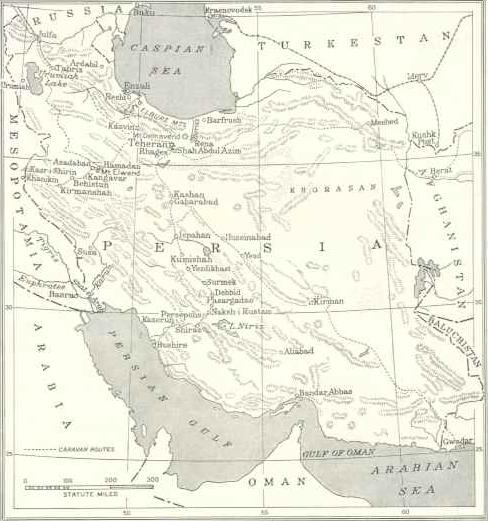
Persia on the eve of Reza Pahlavi's coup
In 1925, Reza Khan, a former Brigadier-General of the Persian Cossack Brigade, deposed the Qajar dynasty and declared himself king (shah), adopting the dynastic name of Pahlavi, which recalls the Middle Persian language of the Sasanian Empire.[7] By the mid-1930s, Rezā Shāh's strong secular rule caused dissatisfaction among some groups, particularly the clergy, who opposed his reforms, but the middle and upper-middle class of Iran liked what Rezā Shāh did. In 1935, Rezā Shāh issued a decree asking foreign delegates to use the term Iran in formal correspondence, in accordance with the fact that "Persia" was a term used by Western peoples for the country called "Iran" in Persian. His successor, Mohammad Reza Pahlavi, announced in 1959 that both Persia and Iran were acceptable and could be used interchangeably.
Reza Shah tried to avoid involvement with the UK and the Soviet Union. Though many of his development projects required foreign technical expertise, he avoided awarding contracts to British and Soviet companies because of dissatisfaction during the Qajar Dynasty between Persia, the UK, and the Soviets. Although the UK, through its ownership of the Anglo-Iranian Oil Company, controlled all of Iran's oil resources, Rezā Shāh preferred to obtain technical assistance from Germany, France, Italy and other European countries. This created problems for Iran after 1939, when Germany and Britain became enemies in World War II. Reza Shah proclaimed Iran as a neutral country, but Britain insisted that German engineers and technicians in Iran were spies with missions to sabotage British oil facilities in southwestern Iran . Britain demanded that Iran expel all German citizens, but Rezā Shāh refused, claiming this would adversely affect his development projects .
World War II
On 13 September 1943 the Allies reassured the Iranians that all foreign troops would leave by 2 March 1946.[8] At the time, the Tudeh Party of Iran, a communist party that was already influential and had parliamentary representation, was becoming increasingly militant, especially in the North. This promoted actions from the side of the government, including attempts of the Iranian armed forces to restore order in the Northern provinces. While the Tudeh headquarters in Tehran were occupied and the Isfahan branch crushed, the Soviet troops present in the Northern parts of the country prevented the Iranian forces from entering. Thus, by November 1945 Azerbaijan had become an autonomous state helped by the Tudeh party.[8][9] This puppet government of the Soviet Union only lasted until November 1946.
Cold War
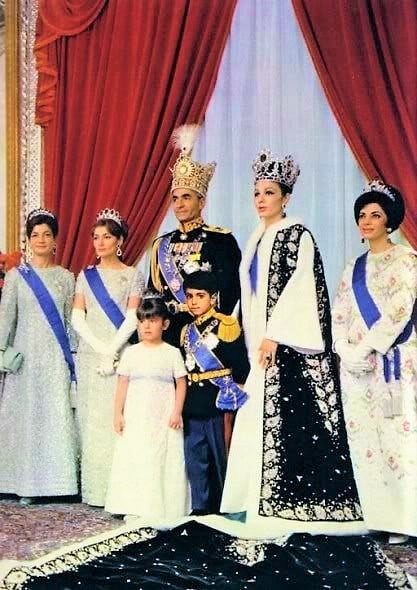
Mohammed Reza Pahlavi and his wife Farah Diba upon his coronation as the Shâhanshâh of Iran. His wife was crowned as the Shahbanu of Iran.
Mohammad Reza Pahlavi replaced his father on the throne on 16 September 1941. He wanted to continue the reform policies of his father, but a contest for control of the government soon erupted between him and an older professional politician, the nationalistic Mohammad Mosaddegh.
In 1951, the Majlis (the Parliament of Iran) named Mohammad Mossadegh as new prime minister by a vote of 79–12, who shortly after nationalized the British-owned oil industry (see Abadan Crisis). Mossadegh was opposed by the Shah who feared a resulting oil embargo imposed by the West would leave Iran in economic ruin. The Shah fled Iran but returned when the United Kingdom and the United States staged a coup against Mossadegh in August 1953 (see Operation Ajax). Mossadegh was then arrested by pro-Shah army forces.
Major plans to build Iran's infrastructure were undertaken, a new middle class began flourishing and in less than two decades Iran became the indisputable major economic and military power of the Middle East.
Collapse of the dynasty
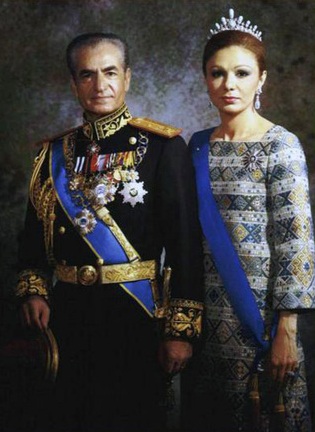
The Shah and his wife left Iran on 16 January 1979.

The last Shah of Iran meets clergy. Some of Iranian clergy opposed him while some others supported him as "The only Shiite ruler".
The Shah's government suppressed its opponents with the help of Iran's security and intelligence secret police, SAVAK. Such opponents included leftists and Islamists.
By the mid-1970s, relying on increased oil revenues, Mohammad Reza began a series of even more ambitious and bolder plans for the progress of his country and the march toward the "White Revolution". But his socioeconomic advances increasingly irritated the clergy. Islamic leaders, particularly the exiled cleric Ayatollah Ruhollah Khomeini, were able to focus this discontent with an ideology tied to Islamic principles that called for the overthrow of the Shah and the return to Islamic traditions, called the Islamic revolution. The Pahlavi regime collapsed following widespread uprisings in 1978 and 1979. The Islamic Revolution dissolved the SAVAK and replaced it with the SAVAMA. It was run after the revolution, according to U.S. sources and Iranian exile sources in the US and in Paris, by Gen. Hossein Fardoust, who was deputy chief of SAVAK under Mohammad Reza's reign, and a friend from boyhood of the deposed monarch.
Mohammad Reza fled the country, seeking medical treatment in Egypt, Mexico, the United States, and Panama, and finally resettled with his family in Egypt as a guest of Anwar Sadat. On his death, his son Crown Prince Reza Pahlavi succeeded him in absentia as heir apparent to the Pahlavi dynasty. Reza Pahlavi and his wife live in the United States in Potomac, Maryland, with three daughters.[10]
Legacy
Under the Qajar dynasty the Persian character of Iran was not very explicit. Although the country was referred to as Persia by westerners, and the dominant language in court and administration was Persian the dichotomy between pure Persian and Turkic elements had remained obvious until 1925. The Pahlavi rule was instrumental in Iran's nationalisation in line with Persian culture and language which, amongst other ways, was achieved through the official ban on the use minority languages such as Azerbaijani and successful suppression of separatist movements. Reza Pahlavi is credited for reunification of Iran under a powerful central government. The use of minority languages in schools and newspapers was not tolerated. The succeeding regime – the Islamic Republic of Iran – has adopted a more inclusive approach in relation to the use of ethnic minorities and their language, however the issues as to Azeris, the Iran's largest ethnic minority, remain and pose considerable challenges for the unity and territorial integrity of Iran.[11]
Pahlavi Shahs of Iran
| Name | Portrait | Family relations | Lifespan | Entered office | Left office | |
|---|---|---|---|---|---|---|
| Shahs of Iran | ||||||
| 1 | Reza Shah |  | Son of Abbas Ali | 1878–1944 | 15 December 1925 | 16 September 1941 |
| 2 | Mohammad Reza Pahlavi |  | Son of Reza Shah | 1919–1980 | 16 September 1941 | 11 February 1979 |
| In pretence | ||||||
| 1 | Mohammad Reza Pahlavi |  | Son of Reza Pahlavi I | 1919–1980 | 11 February 1979 | 27 July 1980 |
| — | Farah Pahlavi (Regent in pretence)[12] |  | Wife of Mohammad Reza Pahlavi | 1938– | 27 July 1980[12] | 31 October 1980[12] |
| 2 | Reza Pahlavi |  | Son of Mohammad Reza Pahlavi | 1960– | 31 October 1980[12] | Incumbent |
Use of titles
Shah: Emperor, followed by Shahanshah of Iran, with style His Imperial Majesty
Shahbanu: Shahbanu or Empress, followed by first name, followed by "of Iran", with style Her Imperial Majesty
Valiahd: Crown Prince of Iran, with style His Imperial Highness
Younger sons: Prince (Shahpur, or King's Son), followed by first name and surname (Pahlavi), and style His Imperial Highness.
Daughters: Princess (Shahdokht, or King's Daughter), followed by first name and surname (Pahlavi), and style Her Imperial Highness.
Children of the monarch's daughter/s use another version of Prince (Vala Gohar) or Princess (Vala Gohari), which indicate descent in the second generation through the female line, and use the styles His Highness or Her Highness. This is then followed by first name and father's surname, whether he was royal or a commoner. However, the children by the last Shah's sister Fatemeh, who married an American businessman as her first husband, are surnamed Pahlavi Hillyer and do not use any titles.
Human rights
Corruption
As Ganji writes, the group submitted at least 30 solid reports within 13 years on a corruption of high-ranking officials and the royal circle, but Shah called the reports "false rumors and fabrications". Parviz Sabeti, a high-ranking official of SAVAK believed that the one important reason for success of regime's opposition is corruption.[13]
See also
Abdolhosseyn Teymurtâš
Abdolrezâ Pahlavi
Ey Irân
Daheye Fajr
Qolâmrezâ Pahlavi
Kamâl Habibollahi
Kašfe hijâb
Norman Schwarzkopf, Sr.
Persian Corridor
Sorude Šâhanšâhiye Irân
Tehran Conference ("Eureka")
Trans-Iranian Railway
List of Shi'a Muslims dynasties

